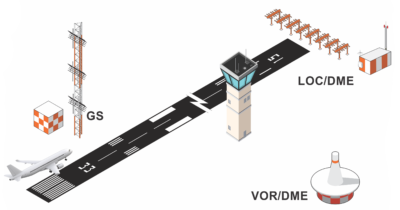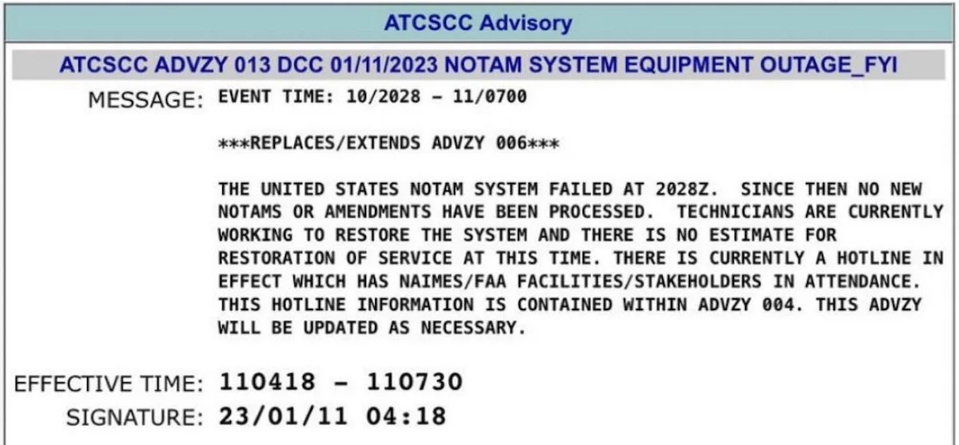Our Mission
Ensuring the safety, resiliency, and operational efficiency of the National Airspace System for all users through rapid modernization of all essential Ground-Based Navigation, Lighting Systems and Infrastructure.
Our Concerns
Chronic under-investment over the last 20 years threatens the performance and reliability of aging ground-based air traffic control systems, nearly all of which are operating well beyond life expectancy. These systems, based on 1970’s era technology, include a network of over 2,700 navigation and landing systems and 600 radar systems, at more than 1,500 sites across all 50 states.
Urgency
The FAA recognizes the issue, and planning is already underway to replace these aging systems. However, the pace of this activity is well below the threshold required – at current funding levels, it will take more than 100 years to modernize this infrastructure. It is important to understand that old electronic equipment is not sustainable indefinitely.
Accelerating rates of component failures combined with parts obsolescence creates the risk of a cascade of field failures that will endanger NAS safety and affect the flying public.
The Coalition is concerned that the aging infrastructure is well past its intended lifespan and will not be able to provide a safe, robust and resilient backbone to air traffic operations. While the FAA and other ANSPs around the world have recognized the continual need for ground-based navigation and lighting systems (at a minimum, backup to GNSS services), the FAA has not prioritized using modern, and less expensive technology to maintain systems.
The typical service life of navigational equipment is 20-25 years.
More than 50% of all FAA NAVAIDs are over 30 years old!
Happening Now
The latest news from Ground Based Infrastructure Coalition
FAA’s NOTAM System Failure – Exposing the Risks associated with Aging Aviation Infrastructure
On January 11th, 2023 the FAA halted flights all across the United States, paralyzing air traffic for hours. While FAA blamed human error for the failure (a contractor unintentionally deleting files in a system) a closer look makes clear that aging infrastructure is at the core of the problem.
Infrastructure Investment and Jobs Act – Congressional Remarks
admin2022-01-05T15:05:27+00:00Following the enactment of the Infrastructure and Investment Jobs Act into law, Representative Rick Larsen (WA 2nd) and Representative Sharice Davids (KS 3rd) - Chair and Vice-Chair of the House...
Infrastructure Investment and Jobs Act
admin2021-11-11T22:18:01+00:00On Monday, November 15th, President Biden will sign the landmark, Bipartisan Infrastructure Investment and Jobs Act into law. The Infrastructure bill contains $25 Billion in funding for Aviation Infrastructure and...
FAA Fumbled Response to GPS Interference
admin2021-10-15T20:43:02+00:00It is not widely known that the US Military regularly jams GPS for testing purposes. This jamming can cause issues with commercial and private aircraft. The IEEE Spectrum investigated the...
Ground Based Aviation Infrastructure Coalition
The Ground Based Aviation Infrastructure Coalition is an informal alliance of companies within the Aviation and Aerospace industry that seeks the rapid modernization of the FAA’s aging Communication, Navigation and Surveillance (CNS) infrastructure. Most of these legacy systems were installed more than 40 years ago, and provide safety critical functions which the aviation community relies upon every single day.
65% off all ILS systems
in the USA are over 40 years old.


News and Articles
FAA’s NOTAM System Failure – Exposing the Risks associated with Aging Aviation Infrastructure
admin2023-02-20T15:35:04+00:00Image source: https://onemileatatime.com/news/faa-system-failure-flight-delays/ "A message from the FAA about NOTAM issues" On January 11th, 2023 the FAA halted flights all across the United States, paralyzing air traffic for hours. While...
Infrastructure Investment and Jobs Act – Congressional Remarks
admin2022-01-05T15:05:27+00:00Following the enactment of the Infrastructure and Investment Jobs Act into law, Representative Rick Larsen (WA 2nd) and Representative Sharice Davids (KS 3rd) - Chair and Vice-Chair of the House...






